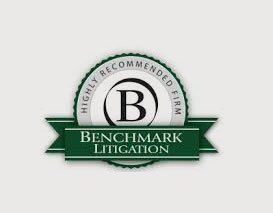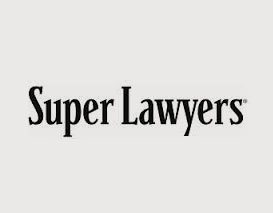Fraud in the Execution and The Two-Year Discovery Rule
Print Article- Posted on: Oct 3 2025
By: Jeffrey M. Haber
As readers of this Blog know, we have written about many types of fraud over the years, such as affinity fraud, common law fraud, fraud in the inducement, fraudulent concealment, and securities fraud. Another type of fraud concerns fraud in the execution or fraud in the factum.[1]
Three years ago, we examined Paredes v. Vorhand , a case involving this legal principle (here).[2] Since that time, we have not examined any cases involving fraud in the execution. Today, we do so.
In Dodobayeva v. Rubinoff, 2025 N.Y. Slip Op. 05219 (2d Dept. Oct. 1, 2025) (here), plaintiff, claiming limited English skills, alleged she was deceived into signing a deed transferring property to her daughter-in-law. The Appellate Division, Second Department, affirmed the dismissal of her claim, ruling that she failed to exercise due diligence, as she neither read nor inquired about the documents. The Court also rejected her reliance on the two-year discovery rule for statute of limitations purposes, finding that she could have discovered the alleged fraud earlier.
Fraud In the Factum: A Primer
Fraud in the execution, or fraud in the factum, arises where a party did not know the nature or the contents of the document being signed, or the consequences of signing it, and was nonetheless misled into executing it.[3] “However, a party who signs a document without any valid excuse for not having read it is conclusively bound by its terms.”[4]
“Moreover, a plaintiff is expected to exercise ordinary diligence and may not claim to have reasonably relied on a defendant’s representations or silence where he or she has means available to him or her of knowing, by the exercise of ordinary intelligence, the truth or the real quality of the subject of the representation.”[5] Thus, the failure to read the document before signing “prevents [the plaintiff] from establishing justifiable reliance, an essential element of fraud in the execution.”[6] In other words, absent some impairment (e.g., “the signer is illiterate, blind, or not a speaker of the language in which the document is written”),[7] a plaintiff cannot justifiably rely on another’s representation that the words used in the document means something other than what they state.[8]
Importantly, the signer who claims to have some impairment must be free of negligence.[9] This means that disability by itself does not automatically excuse the signer from making a reasonable effort to learn the contents of the document being signed.[10] “The cases consistently hold that a person” with a disability or an inability to speak and/or read the English language “must make a reasonable effort to have the document read to him.”[11]
The Two-Year Discovery Rule: A Primer
“A cause of action based upon fraud must be commenced within six years from the time of the fraud, or within two years from the time the fraud was discovered, or with reasonable diligence could have been discovered, whichever is longer.”[12] “‘Where a plaintiff relies upon the two-year discovery exception to the six-year limitations period, the burden of establishing that the fraud could not have been discovered prior to the two-year period before the commencement of the action rests on the plaintiff who seeks the benefit of the exception.’”[13] Although, “‘[o]rdinarily, an inquiry into when a plaintiff should have discovered an alleged fraud presents a mixed question of law and fact’”[14] “summary dismissal is appropriate where it conclusively appears that the plaintiff has knowledge of facts which should have caused [him or] her to inquire and discover the alleged fraud.”[15] “Thus, although ‘mere suspicion’ will not substitute for knowledge of the fraudulent act”,[16] a plaintiff may not “shut his [or her] eyes to facts which call for investigation.”[17]
Dodobayeva v. Rubinoff
With the foregoing principles in mind, we examine Dodobayeva v. Rubinoff, an action, inter alia, to set aside an allegedly fraudulent conveyance of an interest in real property.
Background
In February 2020, plaintiff sued her daughter-in-law (“defendant”), and another defendant, inter alia, to set aside a 2013 conveyance of plaintiff’s one-half interest in certain residential real property located in Queens, New York (hereinafter, the “premises”) to defendant. Plaintiff alleged, among other things, that she was fraudulently induced into signing certain documents, including a quitclaim deed, effectuating the conveyance of the premises, in that she believed, at the time that she signed the documentation to convey the premises, that she was executing documents to enable her son, defendant’s spouse, to become an owner of the premises.
Plaintiff also alleged that she discovered for the first time in January 2020 that the documents that she signed in 2013 made defendant the sole owner of the premises. Plaintiff further alleged that as a native of Uzbekistan, she possessed “limited skills in the comprehension and use of the English language” at the time of the conveyance. Plaintiff additionally alleged that she executed the documents upon her justifiable reliance on purportedly fraudulent representations made by defendant at the time of the conveyance.
Defendant answered the complaint and subsequently cross-moved, inter alia, pursuant to CPLR 3211(a)(5) and (7) to dismiss the cause of action alleging fraud on the grounds that it was time-barred and that plaintiff failed to state a cause of action. Plaintiff opposed. Plaintiff submitted an affidavit in which she stated that she signed the conveyance documents without reading them and that she would not have understood the documents even if she had tried to do so due to her English language limitations. Plaintiff further stated in her affidavit that she never had any conversations with her son about the 2013 conveyance or about the documents she signed until January 2020.
In an order dated September 12, 2023, the Supreme Court, among other things, granted defendant’s cross-motion.
Plaintiff appealed. The Second Department affirmed.
The Second Department’s Decision
The Court held that “plaintiff conclusively was presumed to have agreed to the terms of the documents and, accordingly, cannot establish that she lacked knowledge from which she could have discovered the alleged fraud with reasonable diligence.”[18] The Court explained that “plaintiff admitted that she neither read nor inquired about the contents of the documents upon which she relies to establish the fraud before she signed them. Yet, she failed to proffer any valid excuse for her failure to do so.”[19] Therefore, concluded the Court, plaintiff could not demonstrate fraud in the factum.[20]
The Court also held that defendant “met her prima facie burden of demonstrating that the cause of action alleging fraud accrued no later than the date of the execution of the quitclaim deed in February 2013.”[21] Therefore, said the Court, the fraud in the execution cause of action was “time-barred” as having been “asserted more than six years later” after execution of the quitclaim deed.[22] The Court also held that plaintiff failed to “establish that the fraud could not have been discovered before the two-year period prior to the commencement of [the] action.”[23] “Accordingly,” the Court held that “the Supreme Court properly granted dismissal of the cause of action alleging fraud … as time-barred.”[24]
Takeaway
In Dodobayeva, plaintiff claimed that she was misled into signing a quitclaim deed transferring property to her daughter-in-law, believing it was for her son’s benefit. As discussed, plaintiff claimed that, due to language barriers, she did not understand the document. However, in affirming the dismissal of plaintiff’s fraud claim, the Court found that “plaintiff admitted that she neither read nor inquired about the contents of the documents upon which she relie[d] to establish the fraud before she signed them. Yet, she failed to proffer any valid excuse for her failure to do so.”[25] In doing so, the Court emphasized the principle that individuals are presumed to understand documents they sign unless they can show a valid, non-negligent reason—such as illiteracy or language barriers—and that they made reasonable efforts to understand the document before they sign it.
In Dodobayeva, the Court also addressed the statute of limitations applicable to fraud causes of action. As discussed, the Court held that plaintiff failed to meet her burden of showing that she brought her claim within two years of discovering the alleged fraud. The Court found that plaintiff did not make any inquiries about the alleged fraud for seven years. Consequently, the Court affirmed the dismissal of plaintiff’s fraud claim as time-barred and unsupported by justifiable reliance. Dodobayeva therefore reinforces the principle that litigants have a duty to inquire into the facts and circumstances of the transactions into which they enter when they possess facts showing that they may be the victims of fraud.
____________________________
Jeffrey M. Haber is a partner and co-founder of Freiberger Haber LLP.
This article is for informational purposes and is not intended to be and should not be taken as legal advice.
[1] Fraud in the execution is different than fraud in the inducement. In the latter, the fraud is based on facts occurring prior or subsequent to the execution of a contract which tend to demonstrate that an agreement, valid on its face and properly executed, is to be limited or avoided.
[2] Paredes v. Vorhand, 204 A.D.3d 1468 (4th Dept. 2022).
[3] Fleming v. Ponziani, 24 N.Y.2d 105, 111 (1969); Gilbert v. Rothschild, 280 N.Y. 66, 71-72 (1939).
[4] Cannariato v. Cannariato, 136 A.D.3d 627, 628 (2d Dept. 2016) (alteration and internal quotation marks omitted).
[5] Lapin v. Verner, 238 A.D.3d 1128, 1129-1130 (2d Dept. 2025) (alterations and internal quotation marks omitted); see also Benjamin v. Yeroushalmi, 178 A.D.3d 650, 654 (2d Dept. 2019).
[6] Sorenson v. Bridge Capital Corp., 52 A.D.3d 265, 266 (1st Dept. 2008), lv. dismissed, 12 N.Y.3d 748 (2009).
[7] Anderson v. Dinkes & Schwitzer, P.C., 150 A.D.3d 805, 806 (2d Dept. 2017).
[8] Countrywide Home Loans, Inc. v. Gibson, 157 A.D.3d 853, 856 (2d Dept. 2018); see also Ackerman v. Ackerman, 120 A.D.3d 1279, 1280 (2d Dept. 2014); Dasz, Inc. v. Meritocracy Ventures, Ltd., 108 A.D.3d 1084, 1084-1085 (4th Dept. 2013); Sorenson, 52 A.D.3d at 266. See also Pimpinello v. Swift & Co., 253 N.Y. 159, 163 (1930) (holding, “[i]f the signer [of a document] is illiterate, or blind, or ignorant of the alien language of the writing, and the contents thereof are misread or misrepresented to him by the other party, or even by a stranger, unless the signer be negligent, the writing is void”).
[9] Sofio v. Hughes, 162 A.D.2d 518, 520 (2d Dept. 1990).
[10] Id.
[11] Id. (citing, Albany Med. Center Hosp. v. Armlin, 146 A.D.2d 866, 867 (3d Dept. 1989), and Brian Wallach Agency v. Bank of N.Y., 75 A.D.2d 878, 879 (2d Dept. 1980)).
[12] York v. York, 235 A.D.3d 1032, 1033 (2d Dept. 2025) (internal quotation marks omitted); see also CPLR 203(g); 213(8); Sargiss v. Magarelli, 12 N.Y.3d 527, 532 (2009).
[13] York, 235 A.D.3d at 1033 (quoting Cannariato, 136 A.D.3d at 627).
[14] Gormley v. Marist Bros. of the Schs., Province of the United States of Am., 236 A.D.3d 868, 870 (2d Dept. 2025) (quoting Vilsack v. Meyer, 96 A.D.3d 827, 828 (2d Dept. 2012)); see also Trepuk v. Frank, 44 N.Y.2d 723, 724-725 (1978).
[15] Cannariato, 136 A.D.3d at 628 (internal quotation marks omitted).
[16] Id. (quoting Erbe v. Lincoln Rochester Trust Co., 3 N.Y.2d 321, 326 (1957)).
[17] Saphir Intl., SA v. UBS PaineWebber Inc., 25 A.D.3d 315, 316 (1st Dept. 2006) (quoting Schmidt v. McKay, 555 F.2d 30, 37 (2d Cir. 1977)); see also Shannon v. Gordon, 249 A.D.2d 291, 292 (2d Dept. 1988).
[18] Slip Op. at *1 (citing Cannariato, 136 A.D.3d at 628).
[19] Id.
[20] Id.
[21] Id.
[22] Id.
[23] Id.
[24] Id.
[25] Id.
Tagged with: Commercial Litigation, Fraud, Real Estate Litigation





